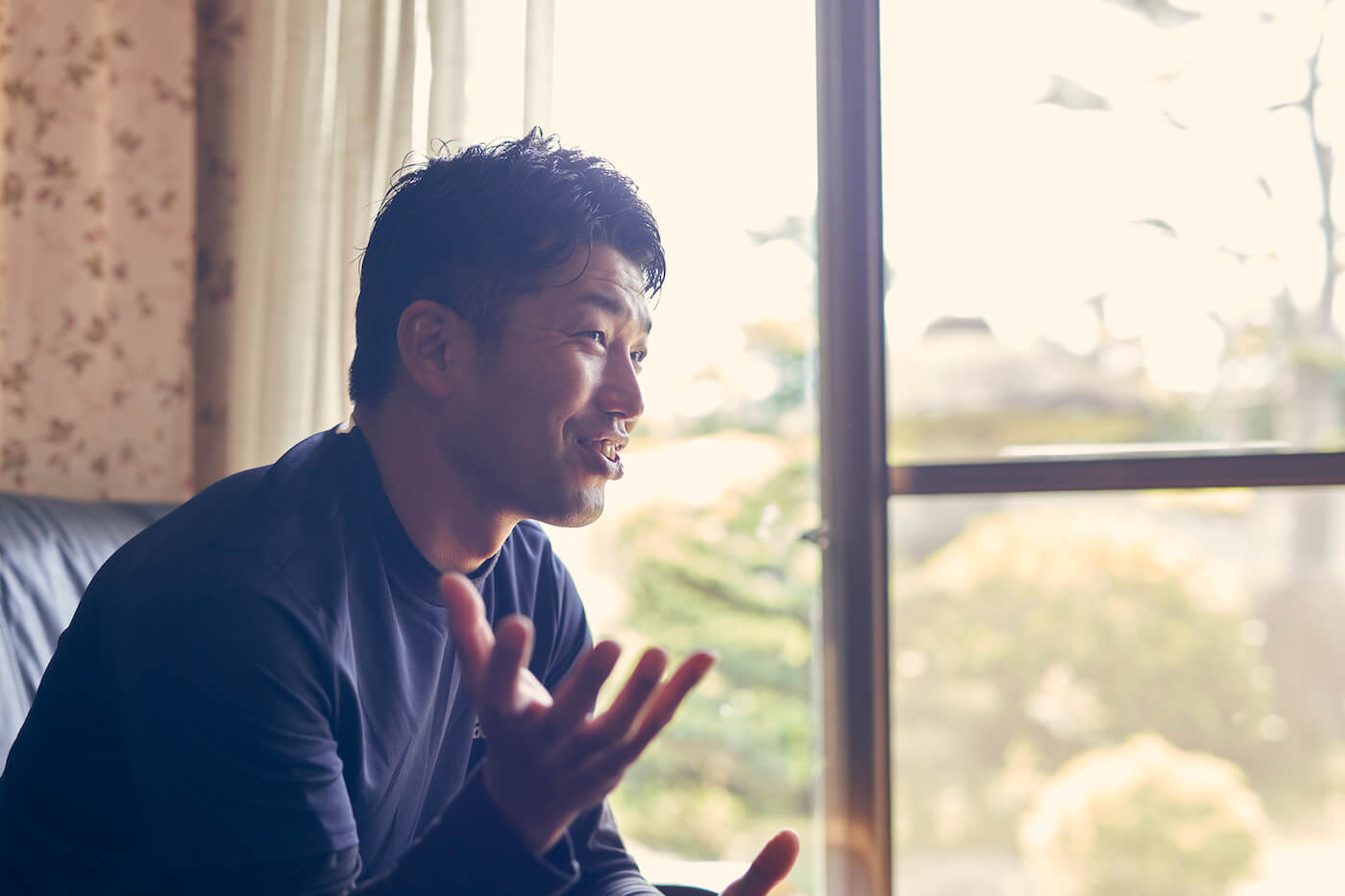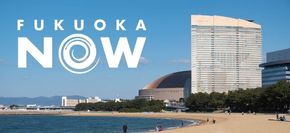A vast agricultural landscape that quenches the hearts of viewers. Hyakushoya Ltd. cultivates rice, wheat, and soybeans in more than 80 hectares of fields in the Nijo district of Itoshima City. Haruhisa Matsuzaki, the CEO and a native of the area, is in his 30s. He continues to take on bold challenges with the aim of pursuing agriculture that circulates regional resources, constantly filled with new ideas and ambitions.

Why did you take over your family’s farming business?
Simply because it was enjoyable. My earliest memories are from before attending kindergarten. Back then, I often went to work on the mandarin mountain with my parents, packed lunch in hand. It felt like a picnic every day. I loved riding in the back of the little truck my father drove, which we called the “pom pom truck”. By the time I was in second grade, I was allowed to operate a large power shovel, and by fifth grade, I was helping to drive the tractor. It was an irresistible environment for someone who loved machinery. There was a time when I dreamt of spending my student life snowboarding in Shinshu (laughs), but I ended up attending an agricultural university and pursuing farming.

What motivates you?
I’ve always had a mindset of “I will do more than what’s expected.” When my father went on business trips, he often asked me to take care of the soybeans. I was the type to get enthusiastic about “doing more than what’s asked.” I also always have a “I want to do it myself” mindset. I’ve learned a bit about car maintenance, and now I can handle most things related to farming, such as changing tires on large agricultural machinery and sheet metal painting.

What are the new initiatives you’ve started in your generation?
My goal is to promote “rice farming that ensures the sustained abundance of local resources and agriculture.” One method is through our unique approach to composting, where we incorporate bamboo chips. We produce this compost in-house, sourcing manure from nearby livestock farms. To harness neglected bamboo groves as a resource, we introduced bamboo chips into the mix. Although it’s unusual for rice farmers to have a dedicated composting facility, we constructed one to handle a greater volume of manure from the local livestock farming community. Our strategy isn’t solely about ensuring our company’s survival. We aspire to build a network of thriving farmlands, while enhancing the cyclic exchange of resources across the entire region. We’re continually experimenting with ways to implement this system effectively.

Who has influenced you so far?
I have many friends who inspire me, but if I were to name one person, it would be Takeshi Sato, a former faculty member of the Faculty of Agriculture at Kyushu University. His fresh idea of considering what people other than producers want from agriculture from a marketing perspective was novel. I thought I was introducing new things into agriculture, but I realized that my perspective was about “how to make work easier.” The event incorporating his idea is the “Itoshima Beer Farm,” where participants boil and eat the soybeans they’ve harvested right in the middle of the field. At its peak, we had over 1,000 visitors, and I experienced firsthand the value of connecting eaters with the actual location.
What was your biggest crisis?
I’ve been farming for 17 years, and I feel like there’s a crisis every year (laughs). By the way, when we started Beer Farm, I had many sleepless nights due to the pressure of whether the soybeans would grow in time for the event! It took a few years to get used to it, and the tension was intense…
What are your dreams for the future?
One dream is to franchise Hyakushoya’s rice cultivation. Currently, the market price for rice is too low. That’s why many farmers are quitting rice cultivation. We, on the other hand, are communicating the value of sustainable agriculture while selling directly at around ¥24,000 for 60 kg. At this price, we can continue to cultivate rice the following year. I don’t want to disrupt the rice cultivation in Itoshima. That’s why I hope to pass on our know-how to other farmers who think, “I want to try it too.”
Another dream of mine is to own a thoroughbred horse. It would be nice to patrol the paddy fields on horseback. I’m seriously researching it (laughs)!

Final question: how are you raising your children?
I have four children, and their environment is almost identical to mine when I was a child. The outdoors is their playground. I want them to enjoy the local area with all five senses, and I’m determined about this. I have many fond memories of my hometown. Even memories of falling from trees and getting slightly hurt are precious to me. To pass on such a pleasant local environment to the next generation, I want to spread the practice of sustainable agriculture. I’ve never thought about making a huge success in my generation, but rather feel like a “relief pitcher” in the continual game of passing down our blessings. I hope we can continue this tradition of passing blessings down for the sake of our children and grandchildren.

Writer’s comment
“When my eldest daughter was one, I saw her putting leaves and soil in her mouth in the paddy field, and my wife said, ‘I’m glad we didn’t use pesticides.’ That’s when I realized,” he recalls. That was the backstory to their slogan, “We provide what we want our children to eat to our customers!” We should support producers who value the eaters. I believe that is a concrete step we can take.
Interview & text by Leyla / Photography by Seiji Watanabe / Edited by: Emiko Szasz








